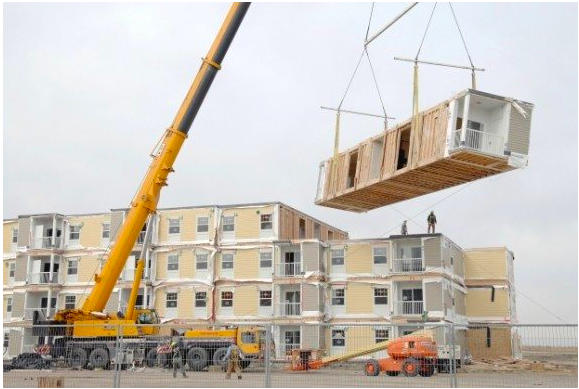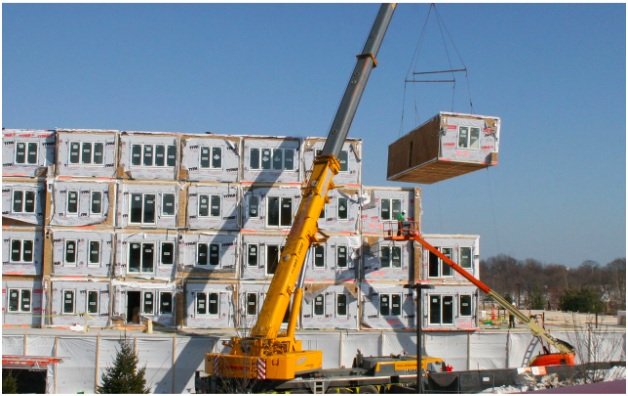According to Curt Ranta, companies and individuals have accepted traditional construction as a standard, norm, and custom because this type of construction has been practiced for centuries. On the other hand, modular construction is a relatively new concept that continuously undergoes the refinement process due to technological changes.
Curt Ranta says that many construction companies, developers, architects, and builders have adapted the modular construction model because it offers a wide range of benefits over traditional construction. However, many new companies and builders do not know how to leverage the power of modular construction.
The primary reason is a lack of knowledge on modular construction. That’s why it is crucial to comprehend the marked differences between traditional and modular construction. Today’s article will differentiate between the two based on the following factors. Read on!
Traditional vs. Modular Construction Processes
Traditional and modular construction have different processes. The conventional approach is like a pipeline, meaning you need to follow a step-by-step process. You must complete one step before moving to the next one.
Otherwise, you won’t achieve your goals. According to Curt Ranta, the traditional construction process involves design engineering, permits and approvals, site development, foundations, building construction, and site restoration.
So, you can initiate the site development phase without completing the design engineering and getting approvals or permits. On the other hand, modular construction is a more sophisticated approach and does not require the completion of one step/phase to carry out another. It means you can carry out two or more steps simultaneously.
For instance, you can carry out the site development phase with building construction. You may ask: how is this possible? Good question! Curt says that modular construction allows for offsite modules manufacturing. So, when you prepare the site, you also work on the construction modules, allowing you to assemble and fix them into place when the right time comes.
Although modular construction offers numerous advantages, such as proper resource allocation, speed, efficiency, and cost-effectiveness, it requires careful planning and preparation. Like conventional construction, there is no room for errors when following the modular construction approach.
Construction Budget and Duration

Traditional construction is more expensive than modular construction because the longer build-time required in the conventional approach increases labor costs. Likewise, the construction process also increases the cost of equipment and tools rentals. In contrast, you can save more money by speeding up the build-time using the modular construction approach.
Because you have the leverage to carry out the process offsite, you can reduce the construction duration. Similarly, you can install the modules efficiently, cleanly, and quickly. Site restoration at the end stage also requires less time when you opt for modular construction. Curt Ranta says that modular construction has 50% less completion time.
Quality and Safety
Although modular and traditional construction requires quality raw materials to get the job done adequately, the conventional approach is more vulnerable to weather conditions, increasing material costs, repair, and maintenance expenses.
According to Curt Ranta, offsite module building is a more qualitative and safer approach because you carry out the process in a controlled environment. That way, you reduce the risk of raw material exposure to harsh weather conditions.
Traditional construction is prone to accidents, such as falling tools, equipment, and debris that can pose dangers to your staff on site. So, the open framework of traditional construction makes it less safe than advanced modular construction.
Carbon Footprint and Eco-Friendliness
Carbon footprint levels and eco-friendliness are two crucial factors to consider when choosing between traditional and modular construction. Unlike the conventional approach, the modular technique produces less carbon footprint due to less waste.
The reason is that you can recycle the material based on your specific requirements. However, this is not the case with the traditional construction process, leading to increased carbon footprint levels and negatively impacting the environment.
Therefore, the cross-utilization of the materials makes the modular construction more eco-friendly. Traditional construction can create a lot of waste, traffic, noise, and disruption for people in the surrounding areas.
Because modular construction involves building modules offsite, it does not create these problems. The reduced disruptions less waste, dirt, dust, and debris are an excellent way to develop and maintain eco-friendly communities.
Final Words
Modular construction dominates traditional construction because it uses advanced technologies and sophisticated approaches to cut time, build effectively, and reduce carbon footprint. Until Next Time!

